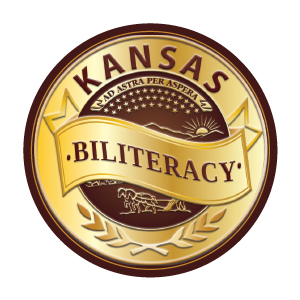Underclassmen adapt to bell schedule
September 9, 2021
In correlation with laxed COVID-19 precautions, NHS has changed its daily schedule back to the original block version. Throughout the week, the schedule alternates between black and gold days. These colored days relate to the class periods students are to attend. On black days, students attend odd numbered blocks and on gold days students attend even number blocks.
Many freshmen, sophomores and new students have not had any prior experience with block scheduling since it was changed last year due to the COVID-19 pandemic and Chisholm Middle School does not use block scheduling. Some students voiced mixed feelings about the change.
“I personally like the [idea of black and gold days], I think they are a good idea and I like having an extra day to get work done so I’m not stressed to do eight classes of work in one evening. I also like that I get to see more of my friends in more classes and I am able to see them more often,” junior Jenna Teichler said. “It truly is a lot easier because all the work isn’t piled on us in one day from every single class.”
Many students said extra days to get work done makes the school day go by faster and not be as stressful. Approximately 30% of secondary schools in the United States use block scheduling, according to the School Superintendents Association. Many NHS students, in particular, say that they are not as stressed because of the block schedule compared to last year’s revised version.
“I think black and gold days make the week go by faster because we don’t have all the same classes in one day,” freshman Macy Scott said. “Students only have four classes each day, and it feels like the days fly by.”
According to various overheard, rushed conversations in the hallways of NHS, there are numerous advantages and disadvantages to the new school schedule.
“I honestly really like how we are doing black and gold days. It makes it less hard because we don’t have to cram all our classes into one day. It is also way better that we have a longer class period, so we can learn more and get more stuff done,” freshman Amina Sulejmani said. “It is very helpful and getting our work done helps us become more successful.”
Getting work done and making time for what will benefit students in the future is beneficial. Schedules are useful tools for improving teaching efficacy, fostering collaboration, and creating a sense of community. Small and large group instruction, lab-based activities, interdisciplinary units, team meetings with students and service learning projects can all benefit from longer instructional blocks and flexible schedules, according to the Texas Elementary Principals and Supervisors Association.
“Black and gold days are very different from what I was expecting them to be like. It is a bit confusing at first to get the hang of the schedule but it is nice to be able to have only 4 classes a day,” junior Madison Schroeder said. “With the longer class times, I can complete most if not all of my work in one class period, and I get two days to complete homework assignments. Overall I really love black and gold days.”
Black and gold days make it easier for students to just complete assignments and make more time for themselves to do it. Many students say that they are able to keep their time managed more easily. The daily timetable of any given school is a critical component of how its student body conveys its mission to their students. It specifies how much time students devote to each subject, each teacher and each classroom. It even has the potential to improve academic performance or to cause stress among students and faculty, according to The Importance of a Strategic Scheduling Meeting.
“I think it is an adjustment for those of us who didn’t have black and gold days last year but so far I am liking it,” sophomore Keegan Schreiber said.
For some people, it is really different, but everyone quickly adjusts to the schedule.
“Frankly, I am glad the school has returned to the black and gold schedule. I think going back to some sense of ‘normality’ is reassuring to both students and teachers,” English teacher Kynda Faythe said.
Each day, there is a black and/or gold flag hanging in the commons to alert students what block scheduling day it is. The flag is changed from black to gold for what day it is by the custodial staff. This is a useful feature for students and helps students that do not remember what day it is, to know where they are going.
“The flag reminds us all what day it is so I don’t go to the wrong class,” junior Trztin Soguilon said.
There are many other schools in the surrounding area such as Hesston, who do not participate in block scheduling and thus have all eight of their classes in one day. The daily school schedule is a critical component of how teachers communicate their lessons and material to their students. It specifies how much time students devote to each subject, each teacher and each classroom. Scheduling has the potential to improve academic performance or to cause stress among students and faculty.
“Scheduling aids clarity of purpose, identifies “crunch” moments, dates your goals and is beneficial to your health,” Teichler said.






















